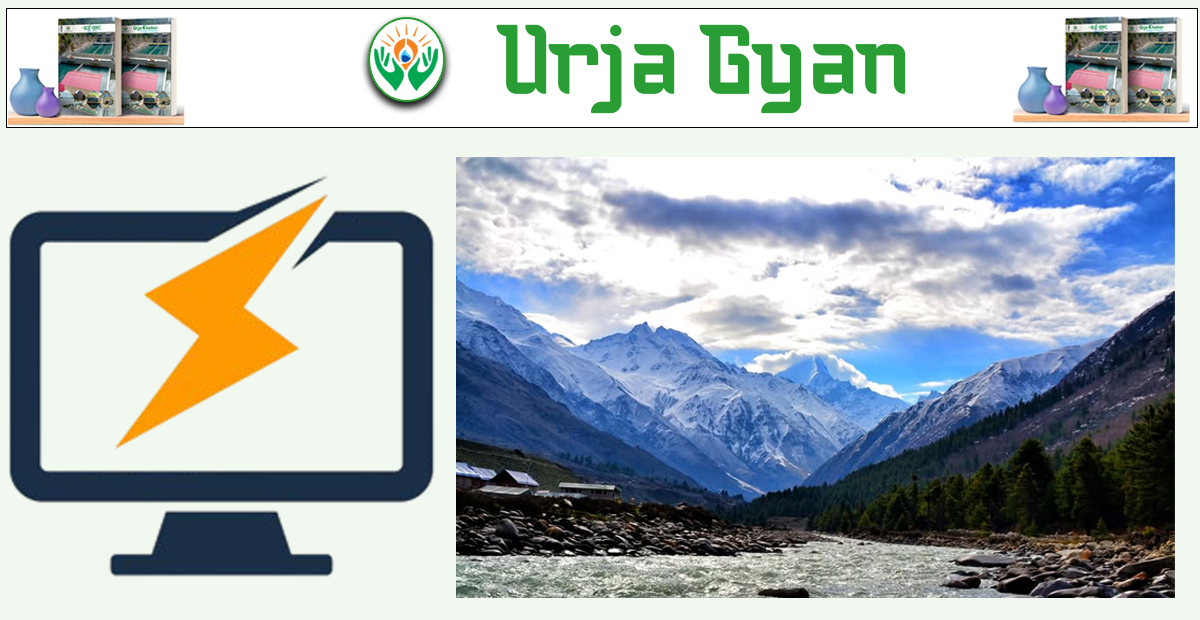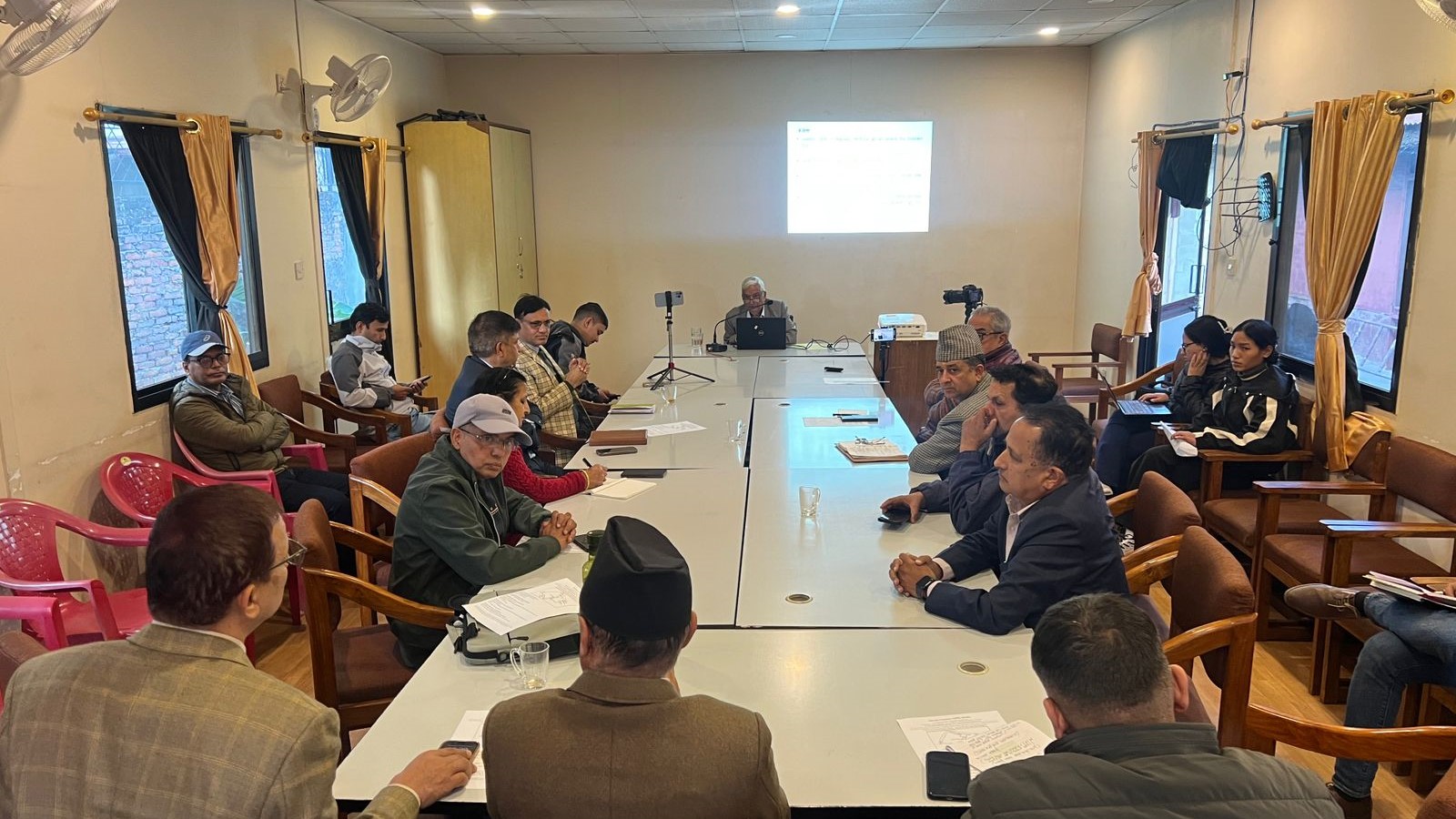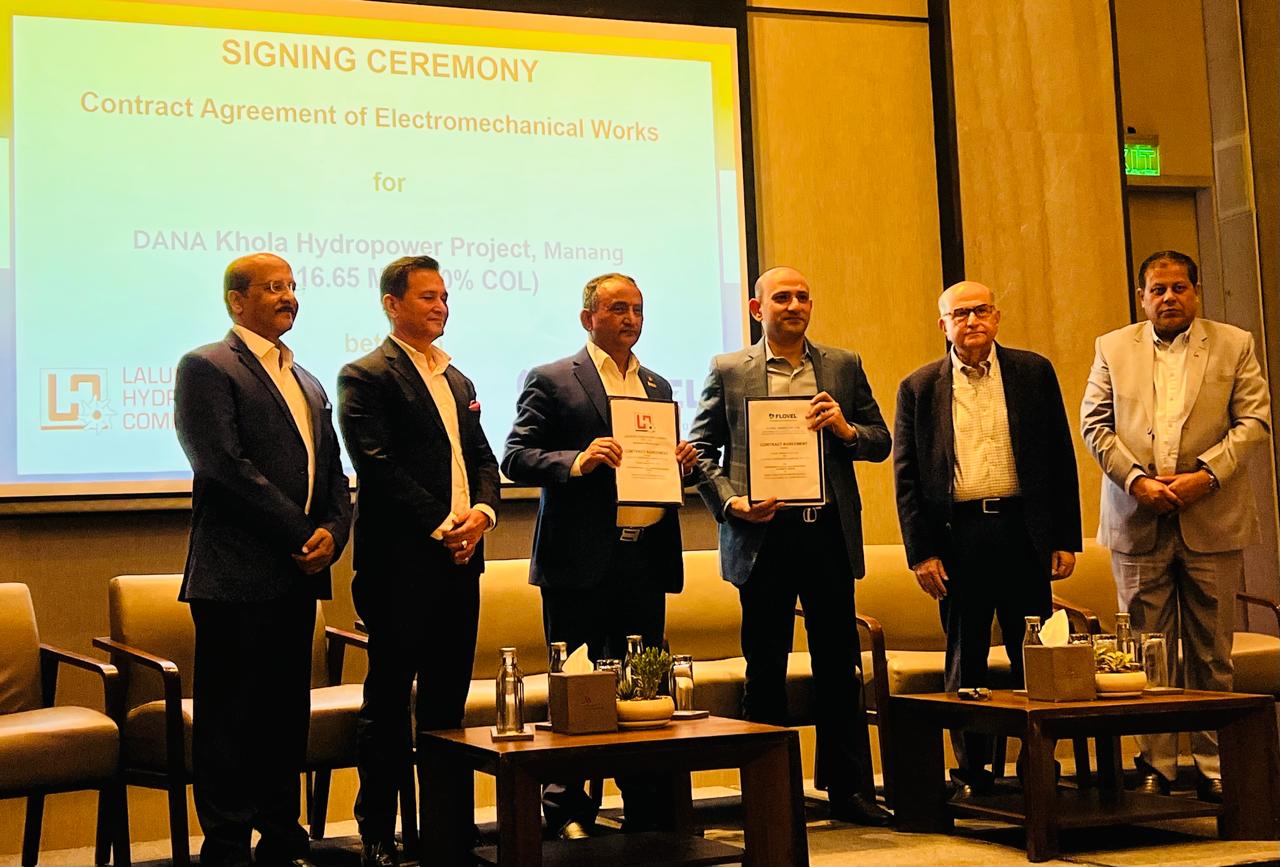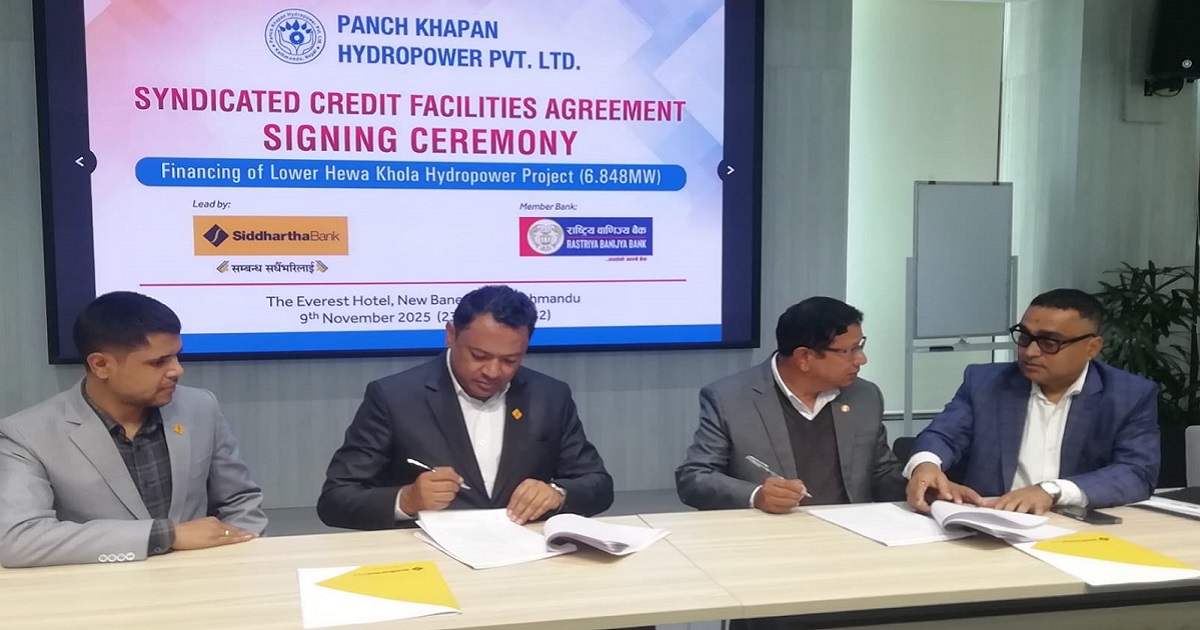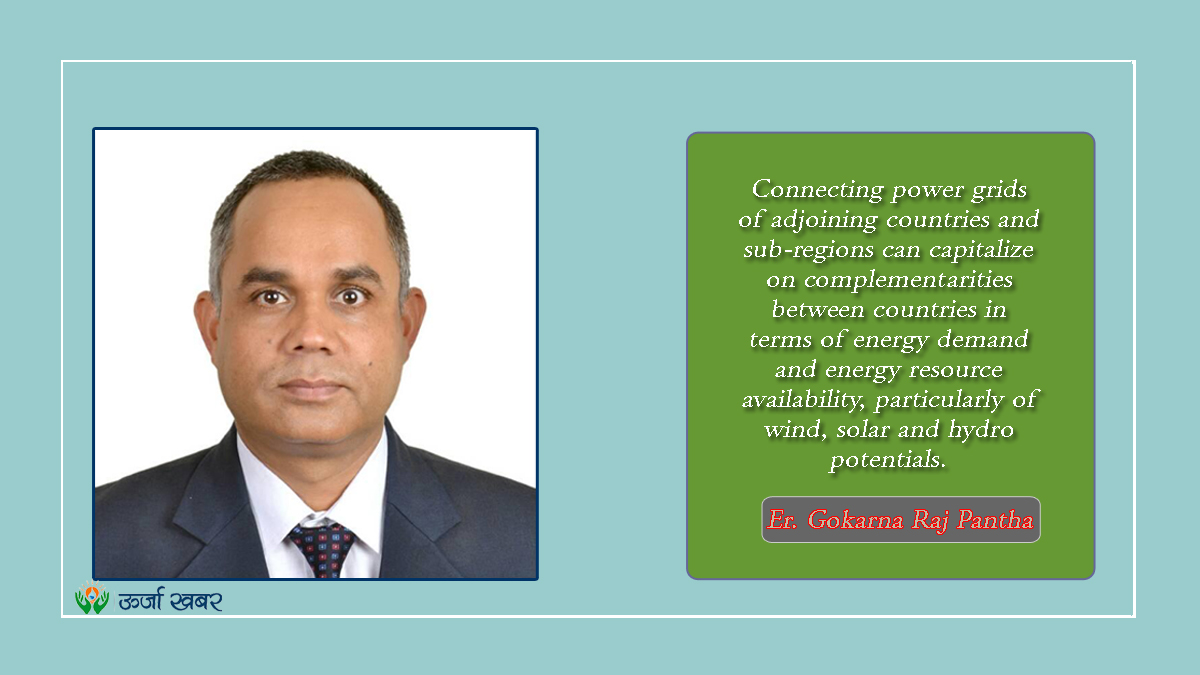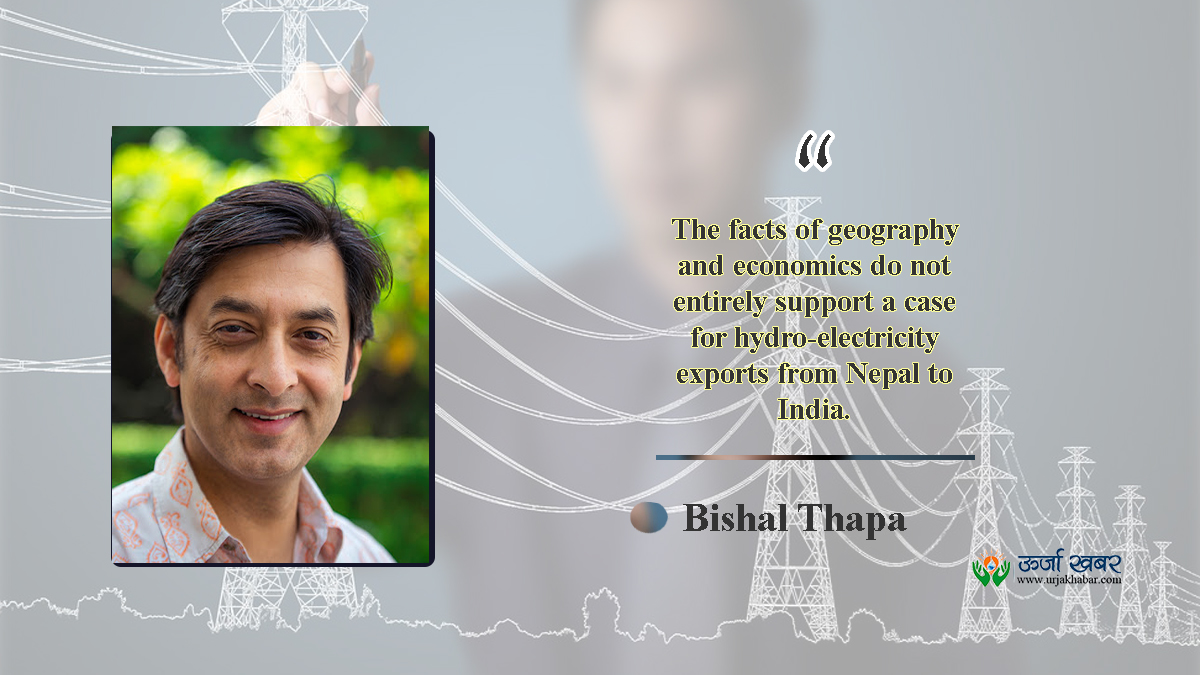Energy Update
Managing Transboundary Dams: Safety, Hydro-Diplomacy, and Sustainable Cooperation
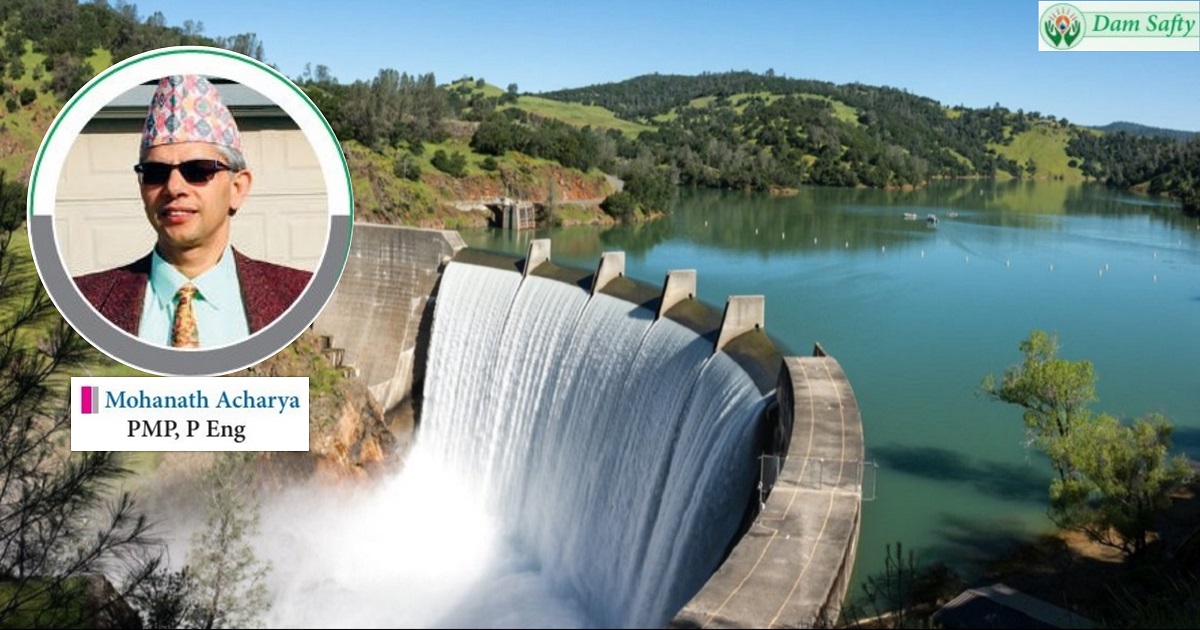
Abstract
Freshwater resources are crucial for human well-being, economic development, and ecological balance. In an era of intensifying climate pressures and growing demands for clean energy, dams have become essential in water resource management. However, dams built on transboundary river basins - where water resources are shared by two or more countries - pose distinct engineering, political, and socio-economic challenges. Climate change, population growth, aging infrastructure, and environmental pollution magnify these challenges, raising the risk of conflict. Over 126 shared river basins currently contain dams with cascading failure potential, urgently highlighting the need for enhanced transboundary cooperation.

This paper explores the complex nature of conflicts over shared water infrastructure, offering historical perspectives, a sevenlevel taxonomy of water-related disputes, and emerging threats such as the impact of climate change and environmental concerns. It demonstrates how risk assessment methodologies, contemporary dam safety frameworks, and hydrodiplomacy can foster collaboration and mitigate tensions. Through case studies spanning North America, the Himalayan region (Nepal-India), Spain-Portugal, and the Eastern Nile Basin, this study underscores both the risks of unilateral governance and the benefits of coordinated approaches. Concluding with best-practice recommendations, the paper emphasizes integrating dam safety, emergency management, and hydro-diplomacy protocols into existing and future transboundary treaties. This strategy helps nations enhance security, protect lives, and preserve vital ecosystems while leveraging the power of hydrodiplomacy for mutual stability and resilience.
Keywords: Hydro-Diplomacy, Dam Safety Management, Transboundary Dams, Water Governance, Climate Change Adaptation, Risk Assessment, Conflict Resolution

1. Introduction
Freshwater resources underpin agriculture, energy production, and industry worldwide (Schilling et al., 2020). Dams serve critical functions—regulating water supply, generating hydropower, controlling floods, and supporting ecosystems. However, governance becomes substantially more complex when these dams lie on transboundary river basins shared by multiple nations. McCracken and Wolf (2019) note at least 2,924 large dams in 40% of the world’s 310 transboundary basins, with 1,416 more under construction or planned in 57 shared basins, collectively affecting over 3 billion people in 151 countries (Acharya et al., 2024).
Despite the existence of more than 800 treaties, agreements, and memoranda of understanding (MoUs), most lack modern considerations - such as the protection of indigenous rights, integrated approaches to dam safety and emergency management, mechanisms for environmental protection, the flexibility needed to address climate change, riskinformed dam safety decisionmaking, and effective processes for conflict resolution. In these circumstances, inadequately planned dam construction and operation can intensify geopolitical tensions, particularly as climate change alters hydrological cycles and amplifies extreme events (Farinosi et al., 2018; Schilling et al., 2020). Furthermore, outdated or insufficient water governance frameworks frequently lag behind fast-evolving challenges, rendering downstream and upstream communities susceptible to unintended consequences.
The Friendship Dam model serves as an excellent example, demonstrating how collaborative approaches can ensure resource equity and promote mutual development.
Key Stressors on Transboundary Dams
1. Potential Impacts of Climate Variability Changing precipitation patterns exacerbate droughts and floods, challenging traditional stationary design assumptions (Cooley & Gleick, 2011; Tian et al., 2020).
2. Rapid Population Growth Escalates needs for water, food, and energy, stoking competition among riparian states.
3. Aging Infrastructure Many older dams require costly upgrades to maintain structural integrity and reliable operations, a process complicated by inter-country cost-sharing negotiations (Marcus et al., 2020).
4. Environmental Degradation & Sedimentation Pollution and sediment accumulation reduce dam capacity and water quality, spurring disputes over who is responsible for mitigating these losses and restoring the original capacity and quality.
5. Data Asymmetry & Transparency Gaps Upstream states often have superior flow and storage data, while downstream states operate at a disadvantage, eroding trust and sparking conflict (Farinosi et al., 2018).
6. Exclusion of Indigenous Rights and Environmental Protection in Existing Treaties Many older agreements overlook the rights of local communities and the necessity to protect vital ecosystems.
7. Poor Implementation of Transboundary Instruments Even where treaties exist, inadequate enforcement mechanism leads to persistent tensions and undercut the potential for cooperation.
By illustrating how integrated dam safety management and hydro-diplomacy can address these stressors, this paper proposes a roadmap for policymakers, engineers, local communities, and international organizations to harmonize water resource management across borders. Drawing on historical analysis, engineering best practices, and legal frameworks, it outlines a comprehensive approach - from early dispute detection to institutionalized long-term collaboration - supported by a seven-level conflict taxonomy. A central premise is that technical solutions must be complemented by robust diplomatic and institutional capacity-building to ensure that transboundary dams evolve from potential conflict flashpoints into opportunities for regional cooperation.
2. Transboundary Issues: History and Modern Realities
2.1 Water as a Weapon and a Lifeline
Water’s dual identity as both a life-sustaining resource and a strategic asset underpins numerous historical conflicts (Birkett, 2017). From the ancient poisoning of wells to the 2023 Nova Kakhovka Dam breach in Ukraine, water infrastructure remains vulnerable to geopolitical tensions (Acharya et al., 2023). Yet, shared rivers also often prompt diplomatic engagement, sometimes resulting in treaties that outlast larger political disputes (Wolf, 2009).
2.2 Transforming Tensions
While transboundary water disputes can be contentious, most do not escalate into overt violence (Wolf et al., 2003). Classic examplesinclude:
• Indus Waters Treaty (1960): Survived wars between India and Pakistan, effectively allocating water among the Indus tributaries
• Columbia River Treaty (1961): Marked a milestone in Canada-U.S. cooperation for flood control and hydropower generation.
However, these older pacts often need updating to address climate adaptation and Indigenous rights. The following section introduces a conceptual framework - spanning seven levels of conflict - to clarify how localized disagreements over dam operations can escalate if unaddressed.
3. Seven Levels of Transboundary Water Conflict
Conflicts evolve along a spectrum from mild tensions to full-scale armed confrontations (Wolf, 2009). This taxonomy, often used in describing the level of transboundary conflicts, aids in recognizing early warnings and guiding de-escalation strategies:
1. Disputes and Tensions (Level 1)
o Minor, non-violent, localized disagreements about water use or access (e.g., downstream farmers protesting reduced irrigation flows due to an upstream hydropower project).
2. Verbal Conflict (Level 2)
o Escalation in rhetoric, public accusations, or inflammatory statements by politicians, media, or community leaders. (e.g., politicians publicly condemning upstream operators and threatening “reprisals” if reservoir releases are not adjusted).
3. Legal and Institutional Conflicts (Level 3)
o Formal legal complaints or arbitration and invocation of treaty mechanisms (e.g., Ethiopia, Sudan, and Egypt bringing their dispute over the Grand Ethiopian Renaissance Dam).
4. Political and Economic Pressure (Level 4)
o Imposition or threat of sanctions, trade restrictions, or use of diplomatic leverage to alter dam operations and water-sharing arrangements (e.g., a nation suspending a bilateral trade agreement unless upstream dam operations are modified or withholding development aid to force changes in reservoir management).
5. Localized Violence (Level 5)
o Physical sabotage or armed protests at dam sites around dam infrastructure, typically confined to the immediate area (e.g., local insurgent groups damaging gates or canals to protest perceived water inequities).
6. Armed Conflict (Level 6)
o Coordinated attacks by state militaries or insurgents targeting dams for tactical gains (Gleick, 2006) (e.g., armed forces seizing a major dam to induce downstream or upstream flooding or breaching dams to flood downstream territories as seen in Ukraine’s Nova Kakhovka Dam breach, using dam destruction as a weapon of war).
7. War Over Water (Level 7)
o Full-scale interstate war, driven by acute water scarcity or strategic control. Historically rare, this remains a risk in severely water-stressed regions with fragile diplomacy (e.g., an upstream nation invading a downstream neighbor to secure key headwaters after negotiations collapse). This framework underscores the importance of promptly addressing low-level disputes before they intensify. Early intervention helps prevent small tensions from spiraling into larger confrontations, underlining the value of robust dam safety management practices and reliable conflict-resolution mechanisms. 4. Dams in Transboundary River Basins
4.1 Defining Transboundary Dams
A dam is considered transboundary if its operation or potential failure affects communities in at least two sovereign states (McCracken & Wolf, 2019). These structures might be newly planned or decades-old dams needing modernization. They confront unique complexities, like shared operational protocols to existing multilateral treaties that may or may not address current hazards and modern dam safety practices. These complexities may range from different legal jurisdictions and divergent safety standards to questions of ownership and joint financing (Acharya et al., 2022).
4.2 Factors Amplifying Conflict
Following are the examples of some factors amplifying transboundary water-related conflicts:
• Socio-Economic Inequalities: Poverty and limited institutional capacity compound the fallout of water disputes, particularly in developing nations.
• Lack of Data Sharing: Upstream parties often hold exclusive access to hydrological data, fostering mistrust among downstream stakeholders (Farinosi et al., 2018).
• Aging Infrastructure: Many older dams require retrofits or expansions to meet modern standards, raising the question of cost-sharing responsibilities (Marcus et al., 2020).
• Inadequate Legal Instruments: Agreements fixated solely on water allocation overlook dam safety, emergency preparedness, Indigenous rights, and environmental considerations or climate adaptation strategies (Acharya et al., 2024).
• Political Tensions: Historical animosities can amplify disputes over new dam projects or reservoir operations (UNEP-DHI & UNEP, 2016).
• Dam Ownership and Control: One-sided control provisions - the Koshi Barrage Treaty, for instance, assigns control to India despite the barrage being on Nepalese territory (Acharya et al., 2022).
4.3 Potential for Cooperation
Not all transboundary dam operations spark conflict. Effective management frameworks such as the concept included in the friendship dams, and proper implementation of such framework can yield benefits for all parties:
• Friendship Dams as Model of Cooperation: Friendship dams are joint infrastructure projects between nations that symbolize international cooperation through shared water resource management. These projects provide hydroelectric power, irrigation, flood control, and water supply while fostering diplomatic goodwill and sustainable development. They demonstrate how nations can collaborate to address common challenges and strengthen regional ties. Projects like the AfghanIndia Friendship Dam (Salma Dam) exemplify how shared infrastructure can transcend geopolitical tensions. The dam not only provides irrigation and hydroelectric power but also serves as a symbol of an enduring partnership, showcasing how equitable resource sharing can build trust and strengthen diplomatic ties.
• Joint Hydropower Projects: Sharing both electricity production and revenue, as seen in the Doosti (Friendship) Dam between Iran and Turkmenistan, highlights how collaboration can address shared energy and water needs while strengthening bilateral relations.
• Coordinated Flood Control: Joint emergency data sharing and resource pooling can mitigate flood risks, benefiting all parties.
• Enhancing Regional Resilience: Upgrading dams against climate shifts can stabilize broader water supply and agriculture.
• Interrelated dam Safety and Emergency Management Plan: Joint risk assessments and stakeholder engagement reduce the probability of conflict while helping to institutionalize best practices in dam safety (Acharya et al. 2023).
When water storage, flood control, and hydropower benefits are distributed equitably, Friendship Dams can significantly enhance bilateral relations and contribute to regional development. However, their success hinges on critical factors such as political stability, inclusive negotiations involving all stakeholders, and comprehensive planning that addresses technical, environmental, and social considerations. By meeting these conditions, transboundary dams can evolve from potential points of contention into powerful symbols of cooperation and catalysts for socio-economic growth and regional stability.
5. Evolution of Water Conflicts and Cooperation
5.1 Historical Lessons and Success Stories
Early conflicts, like the sabotage of canals in 18th- and 19th-century North America (Steinberg, 1990), spurred the creation of formal treaties and commissions. The 1909 Boundary Waters Treaty between Canada and the U.S. established the International Joint Commission (IJC), a pioneering model for equitable water use and conflict resolution (Wolf et al., 2003).
5.2 Barriers to Cooperative Behavior
Despite documented successes, many transboundary basins remain vulnerable to conflict due to many factors like
• Mismatched Political Timelines: Short electoral cycles can disrupt sustained dam planning and operations (Marcus et al., 2020).
• Imbalanced Negotiating Power: Dominant upstream nations or militarily stronger ones may impose unfavorable terms such as impose unilateral solutions, heightening hostilities on weaker downstream partners (De Stefano et al., 2017).
• Colonial Legacies: Older treaties shaped under colonial rule can entrench inequities and unresolved sovereignty issues (Wilder et al., 2020).
• Outdated Legal Instruments: Many treaties omit contemporary dam safety provisions, indigenous rights, or climate adaptation measures (Acharya et al., 2024).
5.3 Water Allocation and Conflict Potential
The link between water scarcity and conflict is often non-linear. Moderate scarcity can sometimes spur cooperation, while extremes in availability (very high or low water availability) can worsen disputes (Dinar et al., 2011). Schilling et al. (2020) emphasize the critical role governance failures and power asymmetries play in fomenting conflict - further justifying the need for a stable, flexible transboundary institutional mechanism.
6. Dam Safety Management in Transboundary Contexts
6.1 Importance of Dam Safety Measures
Traditionally, dam safety focuses on structural resilience such as spillway design for flood handling, and seismic resilience. Yet in transboundary settings, dam safety expands to encompass political and socio-economic dimensions, given potential crossborder impacts.
• Aging Infrastructure & Design Deficiencies: Many existing dams do not meet modern design flood or seismic criteria, particularly in developing regions.
• Emergency Preparedness Plans (EPPs): Cross-border coordination is often lacking, leaving downstream communities unprepared for sudden failures or releases (Acharya et al., 2023).
6.2 Case Snapshots
1. Nepal-India
o Context: The two countries share multiple dams under several controversial treaties, most notably the Koshi and Gandak Agreements.
o Issues: These agreements are frequently criticized for granting one-sided control and lacking adequate cross-border emergency planning.
o Consequence: India maintains primary authority over operational decisions, for example, the Koshi Barrage, leading to recurrent flooding in Nepal’s Terai region and highlighting insufficient reservoir management as well as limited transboundary coordination (Acharya et al., 2022).
2. North America (Canada-U.S.) o Treaties: Boundary Waters Treaty (1909), Columbia River Treaty (1961).
o Challenges: Modernizing agreements to include Indigenous rights and climate-change considerations (Acharya et al., 2024).
3. Spain-Portugal
o Joint initiatives around the Tagus and Douro Rivers include dam safety programs and data sharing.
o Impact: Reduced flood risk and stronger bilateral ties (Marcus et al., 2020).
6.3 The Need for Integrated Risk Assessment
Modern dam safety management practice demands integrating technical analyses - like Bayesian networks, fuzzy logic and multi-criteria decisionmaking - with geopolitical and socio-economic factors (Rai et al., 2014). For instance, high-level machine learning models can project climate induced changes in river flow, estimate sediment buildup rates, and calculate risk probabilities, aiding in proactive policy decisions (Ghoreishi et al., 2022). State-of-the-art risk assessments integrate:
• Engineering Parameters: Design flood estimates, earthquake load cases and reservoir drawdown rates.
• Environmental & SocioEconomic Factors: Sediment management, water quality, local livelihoods.
• Political Dimensions: Treaty obligations, conflict histories, and power imbalances. These multi-layered evaluations enable stakeholders to identify not only the probability of structural failures but also the potential for social and diplomatic fallout so that necessary proactive measures can be taken.
7. Hydro-Diplomacy as a Pathway to Resolution
Hydro-diplomacy applies diplomatic methods such as mediation, conflict resolution, and consensus-building to the realm of shared water resource management (Schmeier & Shubber, 2018). By combining negotiation strategies, conflict-resolution frameworks, and scientifically grounded water management, hydro-diplomacy seeks to convert potential “zero-sum” disputes into opportunities for cooperation, using international river basin organizations (IRBOs) as impartial forums. Its goal is to avert conflicts or defuse tensions by promoting a common understanding of hydrological realities (Milman & Gerlak, 2020). Increasingly, river basin organizations (RBOs) like the Mekong River Commission and the International Commission for the Protection of the Danube River are adopting this integrated approach. Key elements and practical aspects of hydro-diplomacy include:
1. Adaptive Governance: Focuses on flexibility, social learning, and evolving regulations that respond to changing climate and demographic conditions (Wilder et al., 2020).
2. Science-Policy Interface: Encourages transparent, evidence-based discussions that build trust and highlight shared risks and benefits (Cooley & Gleick, 2011).
3. Institutional Capacity: Depends on well-resourced River Basin Organizations (RBOs) capable of enforcing treaties and adapting to new challenges (De Stefano et al., 2017).
4. Technical Data Exchange: Involves sharing real-time reservoir levels, inflow forecasts, and sediment load data to improve overall decision-making (Acharya et al., 2024).
5. Conflict Resolution Mechanisms: Incorporates neutral arbitration or thirdparty facilitation in treaty frameworks, helping avoid stalemates and limit political interference (Espíndola & Ribeiro, 2020).
6. Joint Emergency Exercises: Entails conducting crossborder dam-break simulations and flood-response drills as confidence-building measures, enhancing cooperation among local officials and communities, and nurturing robust institutional ties for managing actual crises (Acharya et al., 2024). These initiatives build trust, streamline crisis response, and reduce the probability of escalated conflicts.
8. Climate Change Implications for Transboundary Dams
8.1 Amplifying Existing Stresses
Rising temperatures, shifting precipitation patterns, accelerating glacial melt, and more frequent extreme events are placing considerable strain on transboundary dams, many of which were designed with mid-20th-century hydrological conditions in mind (Schilling et al., 2020). Infrastructure optimized for milder flood and drought cycles often proves inadequate in today’s volatile climate context (Cooley & Gleick, 2011). Furthermore, population expansion and heightened water demands amplify tensions in already delicate basins (Tian et al., 2020).
The Himalayan region, especially the Nepal-India river basins, offers a prime example, where older treaties do not address evolving climatic and hydrological realities (Acharya et al., 2023).
8.2 Adaptive Management Strategies
1. Flexible Water Allocation Clauses: Allow treaties to adjust outflow rules or share water surpluses and deficits in real time (Cooley & Gleick, 2011).
2. Reservoir Reoperation: Adapt hydropower-centric schedules to accommodate flood control, ecosystem needs, and irregular inflows (Bakker & Duncan, 2017).
3. C l i m a t e - R e s i l i e n t Infrastructure: Retrofitting spillways, strengthening embankments, and installing advanced monitoring systems to handle intensifying flood peaks (Acharya et al., 2024).
8.3 Institutional Shortcomings and Need for Innovations
Most pre-21st-century treaties were drafted with limited awareness of climate volatility. This can intensify risks in shared basins as treaties fail to account for unpredictable water availability (Bakker & Duncan, 2017). Periodic revisions to treaty clauses, supported by real-time hydrological data and climate-risk assessments, are increasingly recognized as vital.
Transboundary river basins in the Himalayan region require innovative thinking to develop more flexible water allocation mechanisms that account for climate-related uncertainties such as fluctuating annual water availability and variable growing seasons. Rather than distributing fixed volumes or flow quotas, the allocation should be responsive to water availability. In a promising development, the World Bank and other international funding entities have begun tying financing to thorough climate-risk assessments, highlighting the need for adaptive, evidence-based treaties that can sustain cooperation across regions.
Recognize and incorporate the cultural and subsistence values tied to water resources by ensuring equitable distribution of benefits.
9. Risk Assessment Methods for Conflict and Dam Safety
9.1 Risk Assessment Methods
Approaches to evaluating transboundary conflict risks range from qualitative to semiquantitative and quantitative methodologies:
1. Qualitative: Grounded in expert judgment, historical analogies, and political context to pinpoint potential “hotspots.” Examples include examining basins at risk, which identifies conflict-prone regions based on scholarly insights (Wolf et al., 2003).
2. Semi-Quantitative: Merged socio-economic data, hydrological modeling, and historical interactions to create basin-specific “risk indices.” It offers a systematic gauge of hydro-political risks (Bernauer & Böhmelt, 2014).
3. Quantitative: Employs machine learning, Bayesian networks, or fuzzy logic to simulate the intricate links among climate, demographics, and governance, offering scenario-based probabilities of conflict or dam failure (Rai et al., 2014; Ghoreishi et al., 2022).
9.2 Institutional Resilience and Reduced Hydro-Political Tension
Institutional resilience reflected in treaties with adaptive allocation and robust conflictresolution provisions often correlates with reduced hydropolitical tension (UNEP-DHI & UNEP, 2016; De Stefano et al., 2017). High-resilience institutions can reconfigure reservoir operations to meet emerging challenges, whereas low resilience frameworks amplify mistrust.
9.3 Dam Safety Framework and Emergency Management
Dam safety is a public safety imperative, especially when failure can impact multiple jurisdictions. Global awareness of dam safety has grown, yet most transboundary treaties still overlook operational and structural risk management at transboundary projects (Acharya et al., 2022). Comprehensive guidelines should include:
• Risk-Informed DecisionMaking: Balancing probability and consequences of various failure modes, including cascade failures and seismic events.
• Cross-Border EPPs: Mandating consistent protocols for evacuation, communication, and response coordination among different jurisdictions involving all relevant stakeholders.
• Lifecycle Assessments: Evaluating environmental and social impacts from dam construction to decommissioning, including sediment management and potential reservoir-induced seismicity.
• Cascade Failure Planning: Accounting for scenarios where upstream dam breaches trigger failures downstream (Acharya et al., 2023).
10. Global Examples of Transboundary Cooperation Below are some examples of transboundary cooperation:
10.1 Canada and the United States
• Boundary Waters Treaty (1909): Created the IJC to address shared water governance. It is considered a long-standing mechanism for conflict resolution, equitable water sharing, and hydropower coordination (Wolf et al., 2003).
• Columbia River Treaty (1961): Coordinates flood control and hydropower generation; modernization discussions now aim to integrate Indigenous rights, ecological flows, and climate change adaptation (Acharya et al., 2024).
10.2 Spain and Portugal (Albufeira Convention)
• Shared Basins: Tagus, Guadiana, Douro, Lima, Minho.
• Cooperative Mechanisms: Joint dam safety regulations, hydrometeorological datasharing, and flood management committees (Marcus et al., 2020).
• Outcome: Greater trust and reduced flood impacts, demonstrating how regular treaty upgrades can foster enduring cooperation.
10.3 Eastern Nile and the Nile Basin Initiative
• Key Players: Egypt, Sudan, Ethiopia.
• Focus: Capacity building, integrated water resource management, and joint studies. It is expected to build a new era of cooperation in the Nile River basin.
• Challenges: Balancing national interests over large infrastructure (e.g., the Grand Ethiopian Renaissance Dam) while establishing basin-wide safety norms and collaboration frameworks.
11. Recommendations
11.1 Integrate Dam Safety Management in Transboundary Agreements
Existing treaties often prioritize water allocation while neglecting operational safety and emergency response measures. To bridge this gap and protect human lives and ecosystems, the following strategies should be implemented:
• Mandatory Dam Safety Clauses: Integrate comprehensive dam safety management provisions into water-sharing agreements and treaties. These clauses should cover emergency preparedness, risk management, modern design standards, reservoir drawdown protocols, floodrelease rule curves, and robust risk management procedures (Acharya et al., 2024).
• Comprehensive Public Engagement: Recognize and incorporate the cultural and subsistence values tied to water resources by ensuring equitable distribution of benefits. This involves consulting and fairly compensating all relevant stakeholders, including local communities and Indigenous groups, throughout the planning and implementation processes (Acharya et al., 2024).
11.2 Adopt Risk-Based Regulatory Frameworks
Traditional prescriptive regulations may fail to account for changing hydrological and seismic conditions. To create more resilient frameworks:
• Develop Societal Risk Tolerance: Establish acceptable risk thresholds through transparent and participatory processes, ensuring that community values and safety standards are reflected.
• Adopt Adaptive Protocols: Implement regular reviews to update design parameters for floods, droughts, and earthquakes in response to climate change projections. Set clear thresholds that mandate additional protections, such as spillway expansions, when necessary (Marcus et al., 2020).
11.3 Enhance Data Sharing and Technical Collaboration
Improved data accessibility and collaborative technical efforts are essential for effective transboundary dam management:
• Open Data Platforms: Create jointly funded networks that provide all stakeholders with real-time data on water flows and reservoir levels, enhancing transparency and informed decision-making (Acharya et al., 2023).
• Joint Modeling Efforts: Develop basin-wide hydrological models that guide reservoir operations, manage environmental flows, and assess hazards. These models help clarify the cumulative impacts of dam operations and potential cascading failures.
11.4 Strengthen Institutional Capacity and HydroDiplomatic Skills
Robust institutions and skilled professionals are critical for maintaining cooperation and effective dam management:
• Financial Resources: Ensure consistent funding and adequate staffing for River Basin Organizations (RBOs), including dedicated authorities for dam safety to maintain operational integrity and enforce regulations.
• Training and Workshops: Implement comprehensive training initiatives for engineers, diplomats, and community leaders, focusing on key areas such as negotiation, integrated flood management, and advanced risk assessment. Collaborative workshops centered around the Friendship Dam model can provide a practical framework for cooperation, equipping stakeholders with the skills needed to address complex transboundary water challenges effectively.
11.5 Recognize and Incorporate Local and Indigenous Knowledge
Integrating the insights and needs of local and Indigenous communities fosters inclusive and sustainable water management.
• Stakeholder Inclusion: Engage grassroots voices from the inception of projects through decommissioning. It ensures that the perspectives and needs of all affected parties are considered and addressed.
• Knowledge Exchange: Blend traditional ecological knowledge with modern risk assessment and reservoir management practices. This integration enhances the resilience and adaptability of water management strategies.
• Benefit-Sharing Mechanisms: Establish fair and transparent systems to distribute revenues generated from hydropower and irrigation projects to the affected communities. Equitable sharing of benefits not only enhances social and economic well-being but also fosters trust and goodwill among stakeholders. The Friendship Dam model serves as an excellent example, demonstrating how collaborative approaches can ensure resource equity and promote mutual development.
12. Concluding Remarks
Water-related crises stand among the most critical challenges of the 21st century, driven by rapid population growth, environmental degradation, and the escalating impacts of climate change. At the center of these issues are transboundary dams, which hold the dual potential to either exacerbate geopolitical tensions or foster international collaboration, depending on their design, operation, management, and governance. These dams embody the complex intersection of technology, politics, and environmental stewardship. While they can ignite disputes that escalate across the seven-level conflict spectrum, they also can become pillars of regional stability and shared prosperity when managed with strategic foresight and cooperative governance.
Friendship Dams, in particular, highlight the transformative potential of shared infrastructure in transcending political divides and fostering regional stability. Projects such as the Afghan-India Friendship Dam and the Doosti Dam between Iran and Turkmenistan serve as tangible examples of how shared resource management can address pressing energy and water needs while building diplomatic goodwill and economic prosperity. However, these projects also underscore the importance of political stability, inclusive planning, and stakeholder engagement to ensure success.
Key Takeaways
• Managing Transboundary Dam is Beyond Engineering: Technical solutions must be paired with diplomatic engagement, equitable benefitsharing, and robust emergency preparedness.
• Interdependence is Inevitable: Upstream and downstream fates are tied; disregarding these connections worsens distrust and instability.
• Hydro-Diplomacy as a Cornerstone: Combining diplomacy, science, and governance channels conflicts toward productive resolution.
• Climate Variability Demands Adaptation: Retrofit and modernize both physical infrastructure and legal frameworks to cope with extreme hydrological events.
• Conflict Escalation Spectrum: The seven-level conflict taxonomy highlights early-warning signals and underscores the importance of timely dispute resolution.
• Friendship Dams as Models for Cooperation: These dams illustrate how inclusive, equitable frameworks can transform conflict-prone transboundary water systems into pillars of peace and development.
• Future of Transboundary Dams: Strengthening treaties with dam safety and adaptive management measures is essential for long-term resilience, equitable resource sharing, regional peace and shared prosperity.
Looking ahead, climate change will amplify water demands for energy and agriculture, underscoring the urgency of integrated, risk-based frameworks and proactive diplomacy. With consistent political will, innovative engineering, and inclusive stakeholder processes, transboundary dams can become catalysts for peace and development rather than sources of conflict. Friendship Dams represent a scalable model for addressing these challenges, balancing technical innovation with social and political inclusivity. By embracing this approach, nations can ensure that transboundary dams serve as catalysts for regional stability, environmental stewardship, social equity, and shared prosperity for upcoming generations.
References
1. Acharya M., Perdikaris, J. Gharabaghi, E.B., Yasui, C. Donnelly R. and Bennett T., 2024 “Dam safety risk assessment for transboundary river basins – examining conflict stressors and cooperation opportunities”. The 2024 Annual Canadian Dam Association, Niagara Falls, 2024.
2. Acharya M. 2023. Dam Safety Management Framework for Mountainous Region – Lessons Nepal can learn from Global best Practices. Urjakhaber, hydropower Journal, Kathmandu, Nepal (invited white paper).
3. Acharya, M., Donnelly, C.R., & Zielinski, P.A. (2022). Evolution of Dam Safety Management Practice for Transboundary Dams – A Global Perspective with a Nepalese Context. 27th International Congress on Large Dams, Marseille, France.
4. Bakker, M.H., & Duncan, J.A. (2017). Future bottlenecks in international river basins: Where transboundary institutions, population growth and hydrological variability intersect. Water International, 42(4), 400–424.
5. Bernauer, T., & Böhmelt, T. (2014). Basins at risk: Predicting international river basin conflict and cooperation. Global Environmental Politics, 14(4), 116–138.
6. Birkett, D.M. (2017). Water critical infrastructure security and its dependencies. Journal of Terrorism Research, 8(2), 1–21.
7. Cooley, H., & Gleick, P.H. (2011). Climate-proofing transboundary water agreements. Hydrological Sciences Journal, 56(4), 711–718.
8. De Stefano, L., et al. (2017). Assessment of transboundary river basins for potential hydro-political tensions. Global Environmental Change, 45, 35–46.
9. Dinar, S., et al. (2011). Scarcity and cooperation along international rivers: An empirical assessment of bilateral treaties. International Studies Quarterly, 55, 809–833.
10. Espíndola, I.A., & Ribeiro, W.C. (2020). Transboundary waters, conflicts, and international cooperation— examples of the La Plata basin. Water International, 45(4), 329–346.
11. Farinosi, F., et al. (2018). An innovative approach to the assessment of hydropolitical risk: A spatially explicit, data driven indicator of hydro-political issues. Global Environmental Change, 52, 286–313.
12. Ghoreishi, M., et al. (2022). Cooperation in a Transboundary River Basin: A Large-Scale Sociohydrological Model of the Eastern Nile. Hydrology and Earth System Sciences Discussions, 1–24.
13. Gleick, P.H. (2006). Water and terrorism. Water Policy, 8(6), 481–503.
14. Marcus, J.W., et al. (2020). Laying the Foundation: A Global Analysis of Regulatory Frameworks for the Safety of Dams and Downstream Communities. World Bank Group.
15. McCracken, M., & Wolf, A.T. (2019). Updating the register of international river basins of the world. International Journal of Water Resources Development, 35(5), 732–782.
16. Milman, A., & Gerlak, A.K. (2020). International river basin organizations, science, and hydro-diplomacy. Environmental Science & Policy, 107, 137–149.
17. Schilling, J., et al. (2020). Climate change vulnerability, water resources and social implications in North Africa. Regional Environmental Change, 20(15), 1–12.
18. Schmeier, S., & Shubber, Z. (2018). Anchoring water diplomacy—The legal nature of international river basin organizations. Journal of Hydrology, 567, 114–120.
19. Steinberg, T.S. (1990). Dam-breaking in the nineteenth-century Merrimack Valley. Journal of Social History, 24(1), 25–45.
20. Tian, G., et al. (2020). Water rights trading: A new approach to dealing with transboundary water conflicts in river basins. Water Policy, 22(2), 133–152.
21. UNEP-DHI and UNEP. (2016). Transboundary river basins: Status and trends. United Nations Environment Programme (UNEP).
22. Wilder, M.O., et al. (2020). Hydrodiplomacy and adaptive governance at the U.S.-Mexico border. Environmental Science & Policy, 112, 189–202.
23. Wolf, A.T. (2009). A long-term view of water and international security. Journal of Contemporary Water Research & Education, 142, 67–75. 24. Wolf, A.T., Yoffe, S.B., & Giordano, M. (2003). International waters: Identifying basins at risk. Water Policy, 5(1), 29–60.
Mr. Acharya is a Canada-based Dam Safety Expert. This article is taken from the 7th issue of Urja Khabar, a bi-annual magazine. Which was published on 7 January, 2025.
Conversation
- Info. Dept. Reg. No. : 254/073/74
- Telephone : +977-1-5321303
- Email : [email protected]






